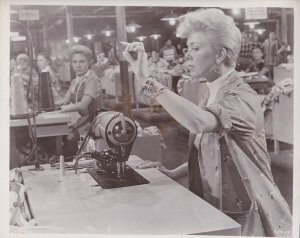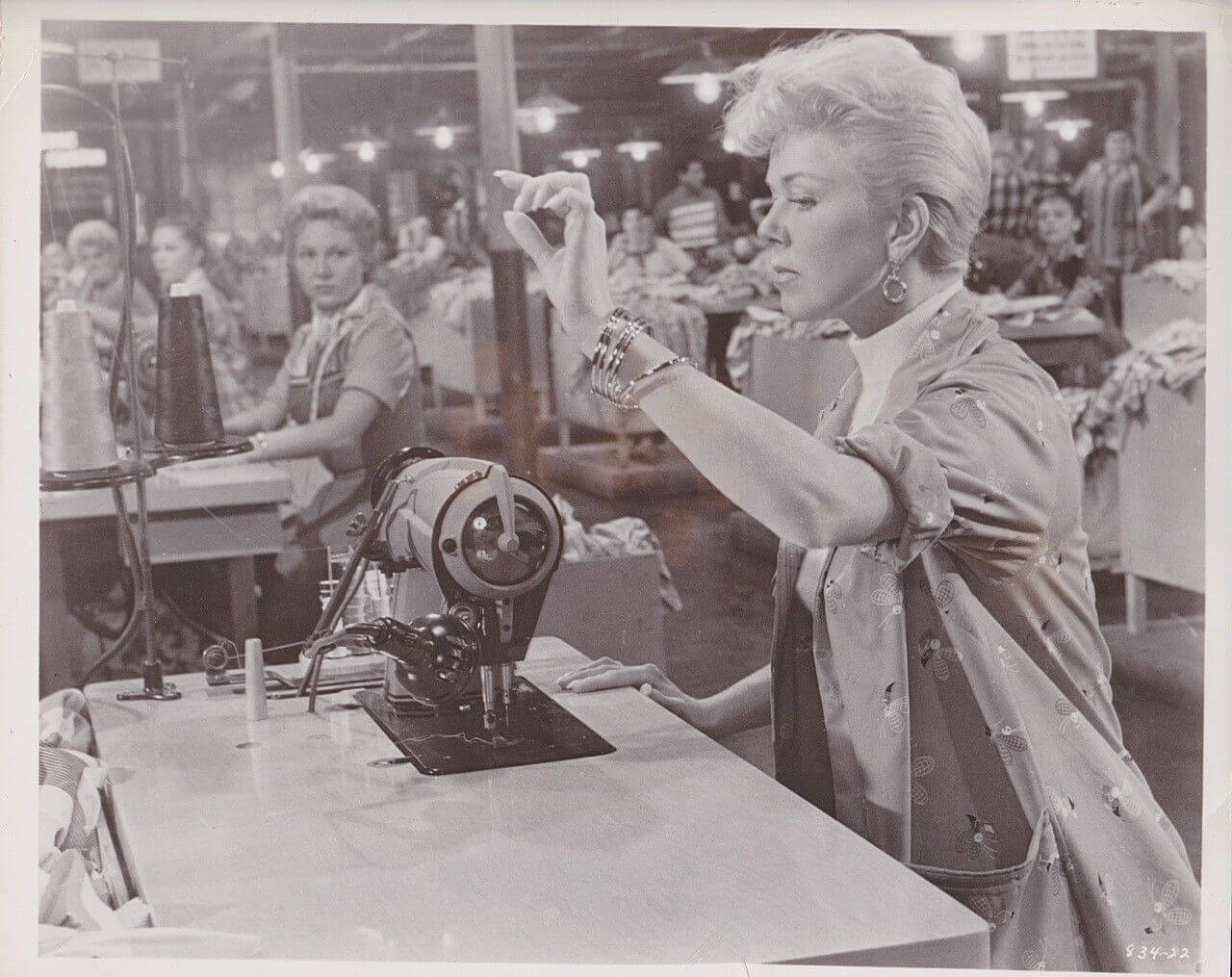Doris Day was one of the hardest working entertainers of the 1950s and 1960s, as well as one of the highest paid female singers/actresses of all time. Many of us probably associate Doris Day with a certain kind of middlebrow wholesomeness and mid-century glamour, but I believe that what made her so successful was her work ethic and her conception of herself as a humble worker—an ethos which had its roots in her upbringing in a German-American working-class community in Cincinnati.
Doris Day was born Doris von Kappelhoff in 1922 into a German-American community in Cincinnati. Her maternal grandfather, born in Berlin, gave up his shares in a wealthy family business in Germany because he refused to be conscripted into the German army. He immigrated to Cincinnati where he started a pretzel factory. As Day remembered, “[m]y grandmother and all their many children, including my mother, worked in the pretzel factory, and my mother’s brothers sold the pretzels on street corners all over Cincinnati.” Her grandfather made enough money from the pretzels that he was able to buy a bakery with an apartment over it for his family.

In 1934 Doris’s mother, Alma, was devastated when her own mother gave the family pretzel business to her brothers—with nothing for the Kappelhoffs. After that Doris’s life was never the same. Doris’s parents divorced and her mother struggled to make ends meet. Still, Alma Kappelhoff was the original “dance mom,” pushing Doris to perform as a singer and a dancer.
Doris was on track to become a successful dancer, but a tragic car accident turned her dreams from dance to voice. She was mentored by a voice teacher in Cincinnati, Grace Raine, who believed in Doris so much that she gave her three lessons every week even though Doris’s mother could afford only one (at $5.00 a week). Raine booked Doris into her first live performance as a singer, at Charlie Yee’s Shanghai Inn, for $5.00 a performance. Doris was only fifteen years old.
Doris became a star at a tender age, leaving her vulnerable to one abusive marriage after another. She married her first husband, a Cincinnati-based saxophone player, when she was 17. He beat her savagely when she was eight months pregnant with her first and only child. Her next husband left her after their wedding night, realizing he didn’t want to be “Mr. Doris Day.” Her third husband, Marty Melcher, married her for her money, got control of it, and left her penniless when he died in 1968. She successfully sued his estate for 22 million dollars. That, plus a successful four year run of The Doris Day Show, gave her the money she needed and deserved into old age.
Doris loved to work. After she threw out her first abusive husband, her aunt asked how Doris was going to survive. “Why, I’ll get a job,” she replied. “All my life I have known that I could work at whatever I wanted whenever I wanted.” Doris recorded “Sentimental Journey” with Les Brown’s big band in LA and never stopped working for decades. From her first film in 1948 through to 1970, she appeared in 36 films and recorded numerous chart-topping albums and singles. In the 1960s, her big hits like Pillow Talk made her one of the highest paid actors in Hollywood.
Doris liked the industrialized regularity of movie work, which she compared to factory work: “[T]he one thing that really pleased me about my new career was that it made me a lunch-bucket lady. The bell rings at noon, you go to lunch; the whistle blows at six, you go home.”
She rejected the notion of herself as anything larger-than-life: “I have never thought of myself as a star. I’m a working lady who tries to be as good as she can at what she does. But ‘star’ is a hokey word. I don’t know what it means. If I’m a star then the expert upholsterer who does my couch is a star.”
Ironically, perhaps, Doris’s working-class roots and humble view of herself led to a series of bad financial decisions, including giving her third husband control of her earnings. “When you’ve been as broke as I’ve been,” Day said, “you learn to count your change before leaving [the store]. But even now, with years of what I guess you’d call success behind me, I can’t believe in the ‘big’ money. If it’s change of a ten-dollar bill, I’m fine. But if it’s a deal involving thousands of dollars, Marty has to handle it. I just can’t imagine that much money.”
Day is best remembered for the single, powerful, professional middle-class characters she played in the 1960s in films like Pillow Talk. But we should not forget her infamous working-class role—as Babe Williams in The Pajama Game (1957). The Pajama GameBroadway musical was inspired by a satirical novel about the garment industry published in 1953, which itself was based on the labor strife that had taken place in an Iowa based pajama factory in the early 20th century. When Pajama Game was made into a film in 1957, Doris Day was cast as a sewing machine operator/union grievance steward who was organizing a strike while at the same time falling in love with her supervisor/boss.
Day imbued Babe with her own feisty confidence, sunny disposition, and a little bit of her feminist fire. In the final song of The Pajama Game, “7 and ½ Cents,” Day “figures it out” with a “pencil and a pad” that in twenty years an hourly 7 and a half cent raise will add up to quite a lot. In the penultimate verse of the song she declares: “I’ll have myself a buying spree, I’ll buy a pajama factory, then I could end up having old man Hasler work for me!”
After the end of her fourth and last marriage, Day finally owned a pajama factory of sorts—a comfortable life surrounded by hundreds of cats and dogs that she had rescued. She retired to Carmel, CA, where she became a local and national icon for animal rescue and animal rights. Out of the public eye for most of the last forty years, she finally became the shy, retiring woman she had always claimed to be.
We should remember Doris Day as a working-class hero—an actor who was constantly in motion, always trying to improve her work, and who loved going to work. She was a star, and, finally, at the end of her life, a wealthy one, but she valued the upholsterer’s labor as much as she valued her own, in part because she saw acting and singing as labor. Through Doris Day we can see Hollywood for the industry that it was—and still is.







